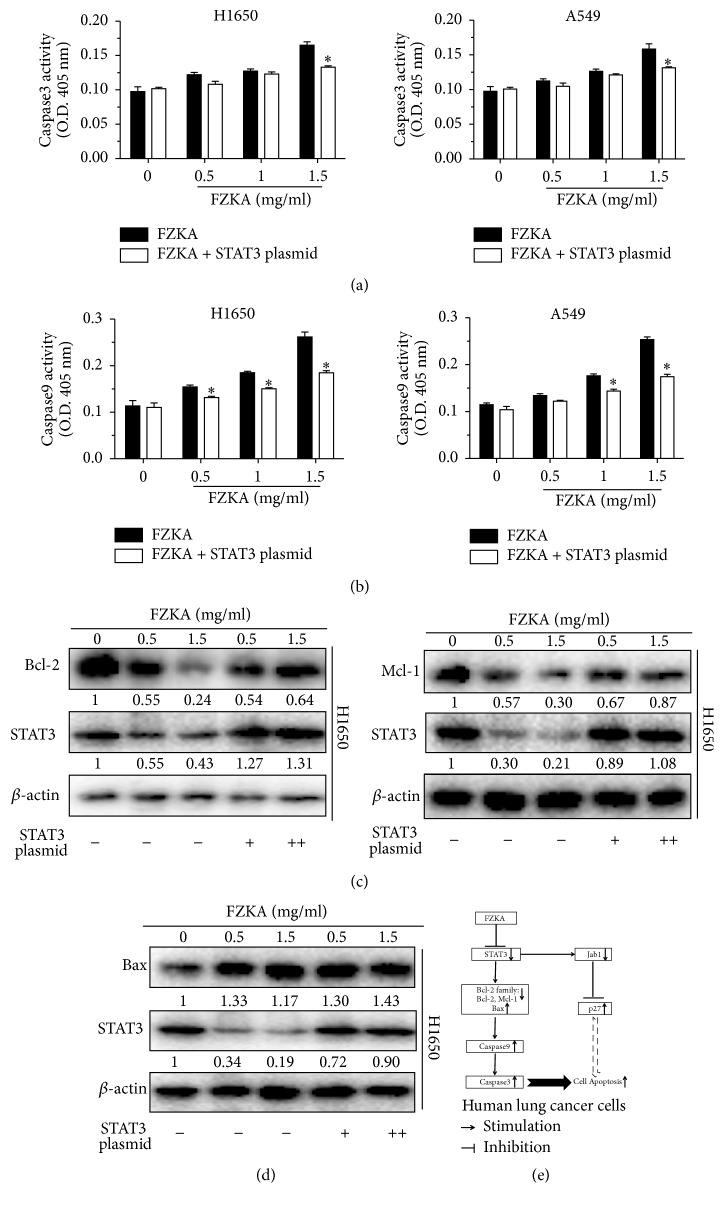Figure 8.
Overexpression of STAT3 overcame the effect of FZKA on the activities of caspase-3, caspase-9, and Bcl-2 families. (a-b) H1650 and A549 were transfected with control or STAT3 overexpression plasmids for 24 h, followed by exposure of the cells to FZKA for an additional 24 h. Afterwards, caspase-3 and caspase-9 activities were detected using caspase-3/9 activity assay as described in Materials and Methods. Data represent means ± SD of three independent experiments. ∗ indicates significant difference as compared to the untreated control group (P < 0.05). (c-d) H1650 and A549 cells were transfected with control or STAT3 overexpression plasmids for 24 h, followed by exposure of the cells to FZKA for an additional 24 h. The protein expression levels of Bcl-2, Mcl-1, and Bax were detected by Western blot. β-Actin was used as an internal control. (e) A schematic diagram shows that FZKA induces lung cancer cell apoptosis through inactivation of STAT3, followed by reducing antiapoptotic proteins Bcl-2 and Mcl-1, while inducing proapoptotic protein Bax. This activates caspase-3/9 and concomitantly increases p27 expression, thereby leading to cell apoptosis. Our findings uncover an additional mechanism underlying the induction of apoptosis by FZKA and suggest that the FZKA-induced lung cancer cell apoptosis is mainly through activation of intrinsic apoptosis pathway.

